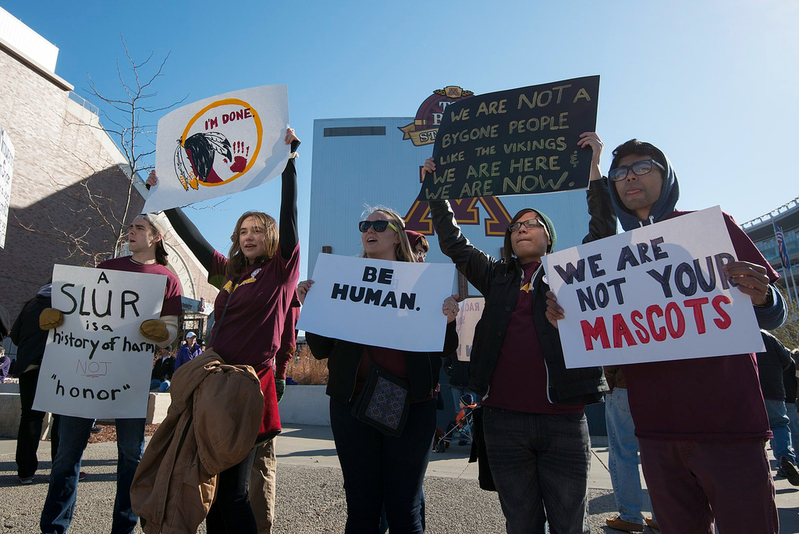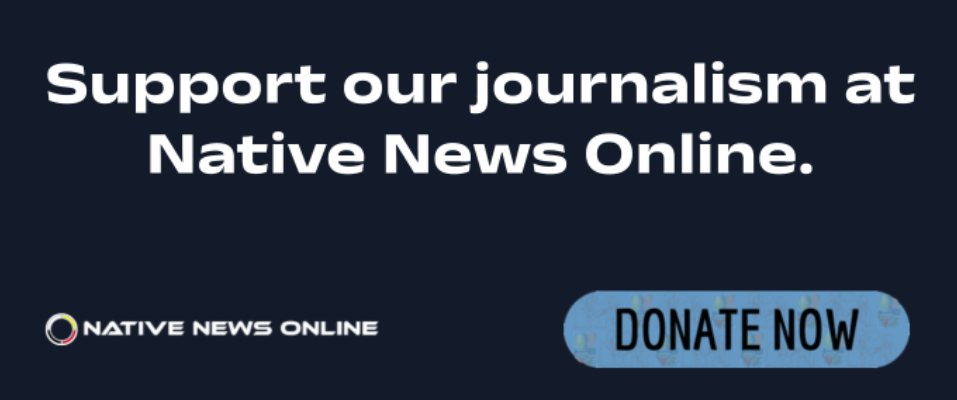
- Details
- By Native News Online Staff
The vote came unanimously Tuesday morning following a proposal announced by New York State’s education department in November. Some districts have gotten ahead of the curve by preemptively changing their mascots, the Times-Union reports, but others attempted to make slighter changes in a bid to keep names like “raiders” or “warriors” sans Indigenous imagery.
An advisory group of Indigenous people roundly rejected those proposed changes and called an argument that such terms communicated respect for their subject matter untrue, pointing to the phrases’ implication of “revering an exterminated group.”
The announcement caused a flurry of protests among residents in Rotterdam, N.Y., in the Mohonasen Central School District, which uses the term “Warriors” as their mascot alongside a logo of three Indigenous faces. Facebook groups surrounding the district were inundated with complaints of changing too much, too fast, in the midst of an overly sensitive public.
Mohonasen Superintendent Shannon Shine wrote in a letter to the community that he planned to seek legal counsel regarding the name change.
“Time is needed to digest the information, to seek legal counsel, to see what additional information is put forward from the NYS Education Department and the NYS Board of Regents, and to plan to further engage with our community stakeholders (parents, alumni, students, faculty/staff, and residents) regarding the new regulations,” Shine wrote.
One route could be securing the blessing of an Indigenous tribe, a venue left open in the Board of Regents’ announcement — but New York State tribes such as the Oneida have already promised to deny such support to anyone, per the Times-Union report.
Tuesday’s vote represents the culmination of an effort that began in 2001 under former Commissioner of Education Richard P. Mills, according to the proposal summary published to the Board of Regents’ website. Mills issued a memorandum “concluding that the Use of Native American symbols or depictions as mascots can become a barrier to building a safe and nurturing school community and improving academic achievement for all students.”
The proposal also builds off of legal precedent established through Cambridge Central School Dist. et al. v New York State Education Dept., et al. in which the Cambridge education board first retired the use of its “Indians” mascot and then attempted to walk that back, prompting a community petition to the Commissioner of Education Betty A. Rosa.
Both Rosa’s initial decision and a later appeal before the State Supreme Court held that Cambridge’s attempt to walk back their retirement of the “Indians” name was “arbitrary” and that the original resolution to retire the name should be upheld.
The decision will go into effect officially on May 3, though education officers expect legal resistance from some schools in the state, the Times-Union reports.
More Stories Like This
Hanging a Red Dress for Christmas: MMIP, Native Higher Education, and Hope for a Better New YearNative Students Can Win $5,000 Scholarship, International Distribution in Pendleton Design Contest
American Indian College Fund Raises Alarm Over Plan to Shift Native Programs Away From the Dept. of Education
MacKenzie Scott Foundation Gives $5 Million Contribution to Little Priest Tribal College
Tribal Leaders Push Back on Dismantling of U.S. Department of Education
Help us defend tribal sovereignty.
At Native News Online, our mission is rooted in telling the stories that strengthen sovereignty and uplift Indigenous voices — not just at year’s end, but every single day.
Because of your generosity last year, we were able to keep our reporters on the ground in tribal communities, at national gatherings and in the halls of Congress — covering the issues that matter most to Indian Country: sovereignty, culture, education, health and economic opportunity.
That support sustained us through a tough year in 2025. Now, as we look to the year ahead, we need your help right now to ensure warrior journalism remains strong — reporting that defends tribal sovereignty, amplifies Native truth, and holds power accountable.
 The stakes couldn't be higher. Your support keeps Native voices heard, Native stories told and Native sovereignty defended.
The stakes couldn't be higher. Your support keeps Native voices heard, Native stories told and Native sovereignty defended.
Stand with Warrior Journalism today.
Levi Rickert (Potawatomi), Editor & Publisher


